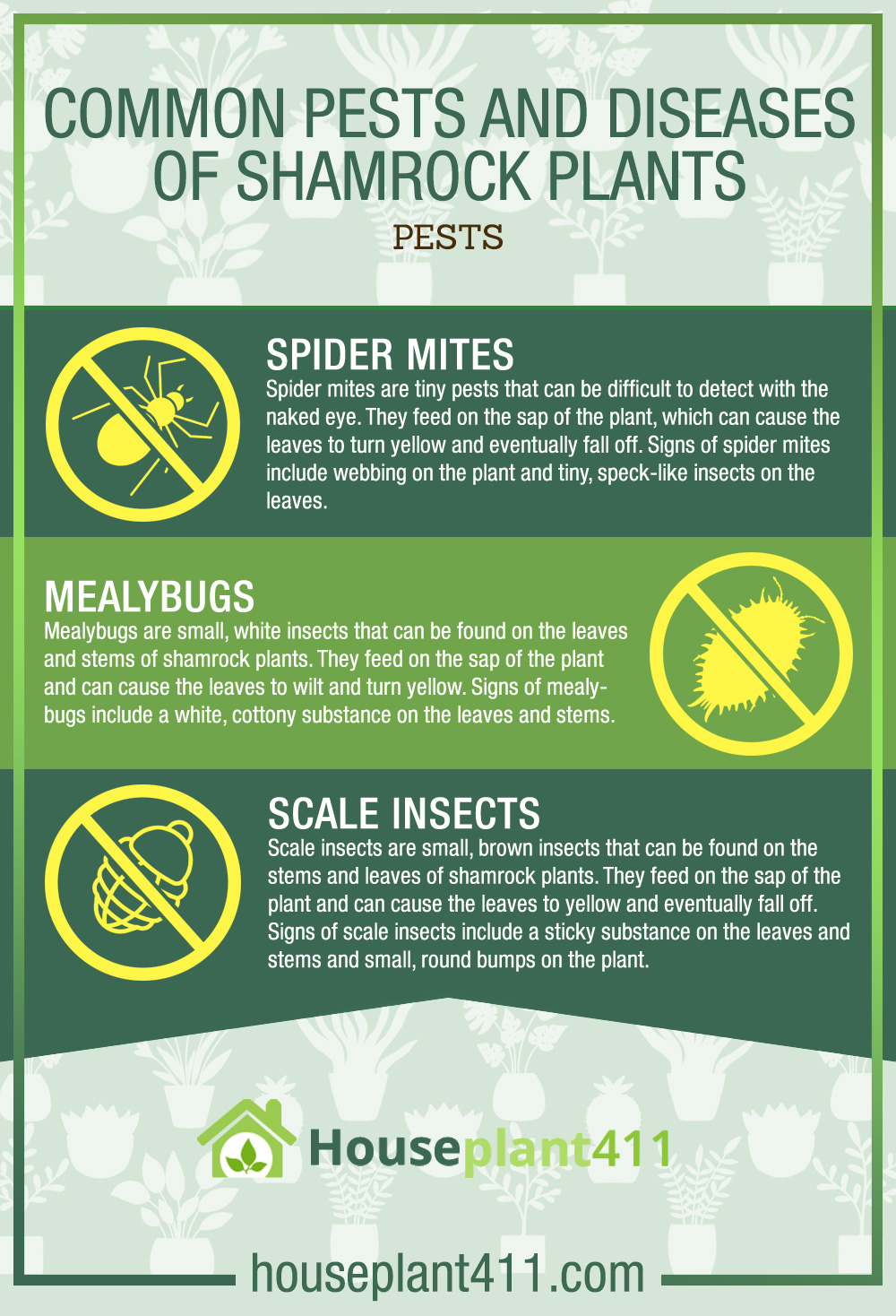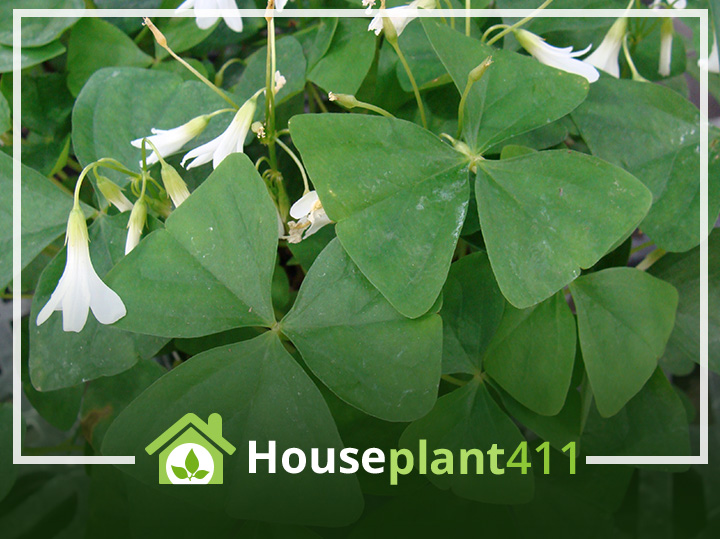Shamrock plants, also known as Oxalis, are a popular houseplant among gardeners. These plants are known for their striking foliage, which comes in a variety of colors, including purple, pink, and green. Shamrock plants are easy to care for and can thrive in a range of conditions, making them a great choice for both novice and experienced gardeners.
However, like all plants, they are susceptible to pests and diseases that can damage their health and reduce their lifespan. In this article, we will take a look at some of the most common pests and diseases of shamrock plants and how to prevent and treat them.
Pests
Some of the common pests that may attack your Shamrock plant include:
Spider mites
Spider mites are tiny pests that can be difficult to detect with the naked eye. They feed on the sap of the plant, which can cause the leaves to turn yellow and eventually fall off. Signs of spider mites include webbing on the plant and tiny, speck-like insects on the leaves. To prevent spider mites, keep your plant well-watered and mist the leaves regularly. If your plant is already infested, you can spray it with a solution of water and dish soap or use a miticide.
Mealybugs
Mealybugs are small, white insects that can be found on the leaves and stems of shamrock plants. They feed on the sap of the plant and can cause the leaves to wilt and turn yellow. Signs of mealybugs include a white, cottony substance on the leaves and stems. To prevent mealybugs, keep your plant well-watered and remove any dead leaves or debris from the soil. If your plant is already infested, you can spray it with a solution of water and dish soap or use an insecticide.
Scale insects
Scale insects are small, brown insects that can be found on the stems and leaves of shamrock plants. They feed on the sap of the plant and can cause the leaves to yellow and eventually fall off. Signs of scale insects include a sticky substance on the leaves and stems and small, round bumps on the plant. To prevent scale insects, keep your plant well-watered and remove any dead leaves or debris from the soil. If your plant is already infested, you can spray it with a solution of water and dish soap or use an insecticide.

Diseases
Some of the common diseases that may attack your Shamrock plant include:
Root rot
Root rot is a fungal disease that affects the roots of the plant. It is caused by overwatering and can cause the leaves to turn yellow and the plant to wilt. To prevent root rot, make sure your plant is not sitting in water and that the soil is well-drained. If your plant is already affected, you can try repotting it in fresh, well-draining soil.
Leaf spot
Leaf spot is a fungal disease that affects the leaves of the plant. It is characterized by brown or black spots on the leaves and can cause the leaves to fall off. To prevent leaf spots, make sure your plant is not overcrowded and that the leaves are not touching each other. If your plant is already affected, you can remove the affected leaves and spray the plant with a fungicide.
Anthracnose
Anthracnose is a fungal disease that affects the stems and leaves of the plant. It is characterized by brown or black spots on the leaves and can cause the leaves to fall off. To prevent anthracnose, make sure your plant is not overcrowded and that the leaves are not touching each other. If your plant is already affected, you can remove the affected leaves and spray the plant with a fungicide.
Other Maintenance Tips for Shamrock Plants
Shamrock plants, also known as Oxalis, are popular houseplants that can be grown easily with little maintenance. These plants are known for their striking foliage, which comes in a variety of colors including purple, pink, and green. If you are adding a shamrock plant to your collection, here are some maintenance tips to keep in mind:
- Light: Shamrock plants prefer bright light. Do not place it under direct sunlight. If you notice that the leaves are starting to fade or yellow, it may be a sign that the plant is not receiving enough light.
- Watering: Shamrock plants prefer moisture, but not if it comes at the cost of waterlogging. Make sure that the water drains out through the edges and the plant doesn’t sit in the water.
- Soil: Shamrock plants like soil that drains quickly. You can use a commercial potting mix or make your own by mixing equal parts.
- Fertilizer: Shamrock plants do not require a lot of fertilizer, but a monthly feeding with a balanced, water-soluble fertilizer can help promote healthy growth. Be sure to follow the instructions on the fertilizer package, as over-fertilizing can damage the plant.
- Pruning: Remove any dead or yellowing leaves from the plant as soon as you notice them. This will help prevent the spread of diseases and pests. You can also pinch back the tips of the plant to encourage branching and a fuller plant.
- Repotting: Shamrock plants should be repotted every 2-3 years. Choose a bigger pot and fill it with fresh potting soil. Be sure to gently loosen the roots before transplanting to encourage healthy growth.
By following these maintenance tips, you can keep your shamrock plant healthy and beautiful for years to come. Remember to keep an eye out for any signs of pests or diseases and take action as soon as you notice them.
Conclusion
In conclusion, while it is relatively easy to care for shamrock plants, they are still susceptible to pests and diseases. By taking care to prevent these issues and knowing how to treat them, you can keep your shamrock plants healthy and beautiful for years to come.
Remember to keep your plant well-watered, remove any dead leaves or debris from the soil, and keep an eye out for any signs of pests or diseases. With a little bit of care and attention, your shamrock plants will thrive and bring beauty and joy to your home.

